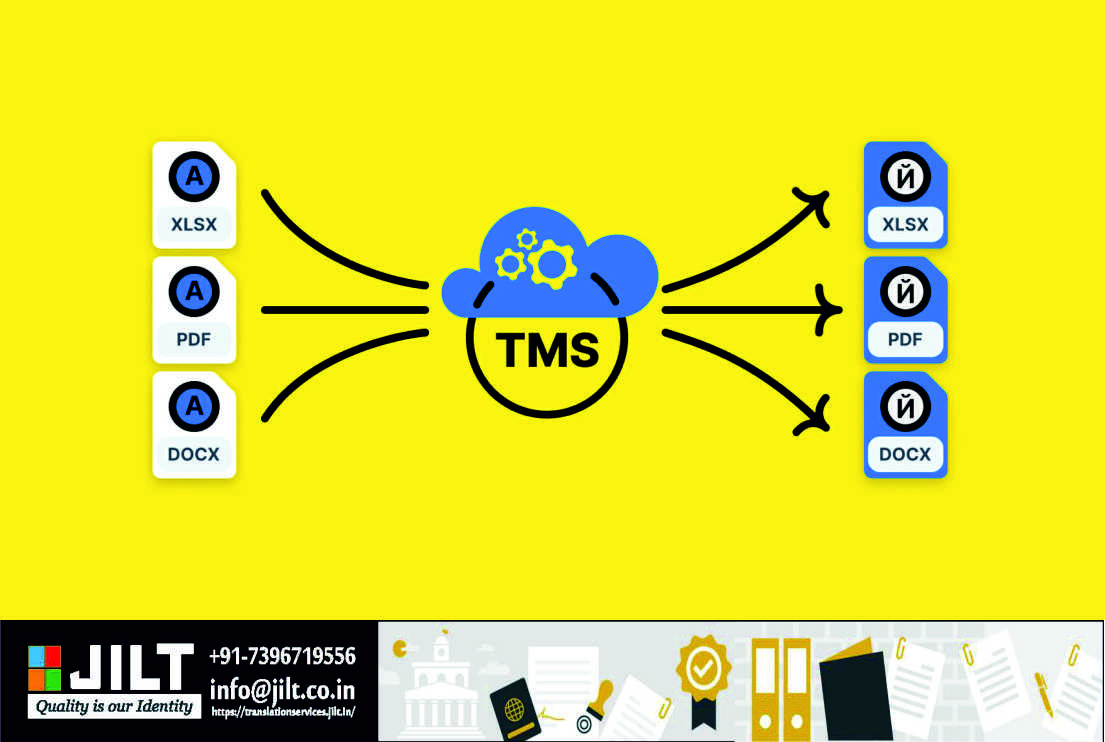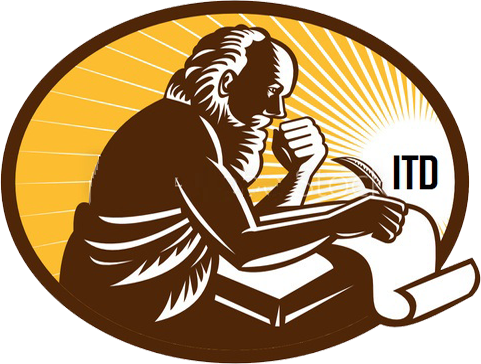
A ROADMAP FOR CHOOSING THE BEST TRANSLATION MANAGEMENT SYSTEM
by Dr. Abu Mazhar Khalid Siddique - March 04, 2024
INTRODUCTION
Choosing the best Translation Management System (TMS) requires a planned approach that takes into account many factors. First, you should look at what your company needs, taking into account the size, scope, and language challenges of your projects. Check to see if it works with current tools and workflows to make sure the integration goes smoothly. Check to see if the TMS can be expanded to handle future growth and new technologies, which will protect your investment.
It is very important that the translation is accurate, so check to see if the TMS supports a wide range of languages, accents, and industry-specific terms. Check out its teamwork features, which make it easier for teams around the world to talk to each other. To protect sensitive linguistic assets, security procedures must be in line with industry standards.
Making things easy for people to use is important for running things smoothly. Check out how easy the interface is to use and how many customization choices there are to make it fit the way your team works. A strong help and training ecosystem from the TMS provider is very important for dealing with problems and making things run as smoothly as possible.
It's important to think about how much something costs and how much it pays off in the long run. Doing a lot of research and, if possible, trying things out first are very helpful in making an informed choice. In the end, the right TMS balances your organization's technological power with its language needs, improving your ability to communicate globally.
With the following essential steps, you will be able to select the TMS that is most suitable for the requirements of your organization:
Identify Your Requirements
Before you can start looking for the best Translation Management System (TMS), you need to carefully consider your company's translation needs and overall goals. Start by figuring out how much and what kind of information needs to be translated. This will give you an idea of how big your language projects are. Take stock of the many languages that are important to your global communication plan and make sure that the TMS works well with the specific language needs of your target audiences.
Think about how people work together in your company. Find out how well foreign teams need to be able to work together for translation workflows to run smoothly. Check to see if it's possible to connect to other systems, which will help your business run more smoothly and consistently. Budget limitations are very important; set financial limits that balance the best TMS features with being responsible with money.
Set up a clear set of criteria to compare TMS choices that include the features that are essential to your translation processes. As you choose a TMS, this basic information will not only help you, but it will also make sure that the one you choose is a custom fit for your company's specific translation needs and strategic goals.
Research TMS Providers
When looking for a Translation Management System (TMS), it's important to look at a lot of different companies. Start by looking closely at reputable and well-known sellers, paying special attention to their past work and reputation in the industry. Look at their websites and read about their products, paying special attention to the ones that have features that meet the needs of your company.
Read customer reviews and case studies to get a sense of how the product is used and how people have felt about it in real life. Check to see how well the TMS handles scaling, language support, and how people work together. A close look at these factors will show how knowledgeable the provider is and how well they can meet your specific needs. Look for TMS providers that have a track record of providing strong solutions. This will help you make sure that your investment fits in with your company's goals for global communication and operational efficiency.
Evaluate Features and Functionalities
When looking for the best Translation Management System (TMS), it's important to carefully compare all of its features. Look closely at the tools that can help you handle projects, and make sure that everything runs smoothly. Check the use of translation memory (TM) by looking at how well each TMS uses language resources to improve the consistency and speed of translations.
Explore tools for working together, making sure that the TMS helps teams around the world communicate clearly. Look into terminology management and find systems that work with the way people talk in your business. Check that all file formats are supported, so that all of your different kinds of content will work. Quality assurance features are very important; look for TMS choices that have strong ways to find and fix mistakes. Look into your integration choices and make sure they work with the systems you already have so your business process runs smoothly. Reporting and tracking tools make it easier to see how translations are being done, and scalability makes sure that the TMS can grow as your business does. Taking these things into account, along with your own needs, will help you find the TMS that best meets your translation goals.
Consider User Experience and Interface
As the TMS selection process progresses, it is crucial to initiate direct interaction with prospective solutions. In order to familiarize oneself with the interfaces of the shortlisted Translation Management Systems (TMSs), it is advisable to request demonstrations or trial versions. Conduct a comprehensive evaluation of usability elements, including navigation, intuitiveness, and simplicity of use, to ensure that the TMS seamlessly integrates with the workflow dynamics of your team. Assess customization options to ensure that the interface can be modified to suit the particular requirements of your organization.
By involving potential end-users in the evaluation process, invaluable feedback on usability can be gathered. Their perspectives will offer a pragmatic evaluation of the degree to which the TMS is compatible with their daily operations and integrates with their inclinations. Adopting a user-centric approach guarantees that the selected TMS fulfills not only technical prerequisites but also aligns with the practical necessities and inclinations of frequent users, thereby promoting a streamlined and effective translation workflow.
Integration Capabilities
When assessing Translation Management Systems (TMSs), integration features are critical for their smooth adoption into your existing infrastructure. Determine whether the TMS is compatible with your organization's technological stack, and examine the simplicity of integration. Evaluate the TMS's interoperability with other tools and systems that are critical to your everyday operations, guaranteeing a smooth flow of data and minimal disturbance.
Additionally, consider data sharing systems and automation potential. A strong TMS should allow for efficient data flow between the system and external platforms. Evaluate automation capabilities to improve translation procedures and reduce manual involvement. This thorough assessment guarantees that the chosen TMS not only matches your immediate translation requirements, but also easily fits into your technological ecosystem, improving operational efficiency and data interchange capabilities throughout your firm.
Security and Data Protection
The protection of sensitive data is of the utmost importance when selecting a TMS. Take precautions to ensure that the Translation Management System (TMS) you select adheres to stringent security protocols. It is important to inquire about data encryption procedures in order to protect sensitive information while it is being transmitted and stored. It is important to evaluate access controls in order to ensure that only authorized workers are able to manipulate critical linguistic assets. Make sure that you have a clear understanding of the backup methods that will ensure the preservation of essential translation data in the event that unexpected events occur.
Additionally, it is a non-negotiable requirement to comply with the regulations of the sector. Inquire about the TMS's compliance with relevant regulations, such as the General Data Protection Regulation (GDPR), to ensure that the system is in line with the rules that are in place for the protection of personal information on a global scale. With this combined focus on security and compliance, your firm is protected from the risk of data breaches and the legal repercussions that may result from them.
Seek Recommendations and References
Getting advice from coworkers, peers in the business, and professional networks is a smart move when choosing a TMS. Start a conversation to get references and recommendations about their experiences using different Translation Management Systems (TMSs). Learn about the subtleties of their interactions and how their translation operations and overall efficiency have been impacted by various platforms.
By utilizing the pooled expertise within your professional network, you can acquire a firsthand understanding of the advantages and possible drawbacks of various TMSs. Carefully evaluate their input, making sure it fits the objectives and demands of your company. By leveraging the real-world knowledge of individuals who have successfully navigated the TMS terrain, this collaborative method guarantees a well-informed decision that will result in a more effective and customized deployment within your particular operational context.
Conclusion
This roadmap is a strategic way for companies to find the best translation management system (TMS) in the complex world of TMS. A customized method is formed by carefully examining needs, researching providers, and breaking down features. The plan makes sure that integration goes smoothly by using user-centered trials and security concerns. At the end of the journey, peers in the same business give useful advice that helps with making decisions. In the end, this roadmap gives decision-makers the information and trust they need to pick the best TMS, matching linguistic capabilities with business goals for a better global communication strategy.
Our organization employs native-speaking translators who can provide certified translation services in any language. We provide translation services in English (Urdu), Arabic (Spanish), German (French), Persian (Iranian), French (Italian), Japanese (Korean), Russian, and any other Indian or local language. Expert proofreaders at our company will inspect the translation. We also provide a courier service to deliver completed documents to our clients.
- Also Read :- Services for Retail translation and E-shop localization
- Also Read :- Physical or Chemical Analysis Reports of Products Translation Service
- Also Read :- HOW TO MAKE AN SEO-OPTIMIZED MULTILINGUAL BLOG ?
- Also Read :- The Importance of Entry and Exit Stamps on Passport Translation from Arabic to English
- Also Read :- Passport Translation Services
- Also Read :- THE CRUCIAL ROLE OF LEGAL TRANSLATION: SAFEGUARDING IDENTITIES AND ENSURING GLOBAL COMPLIANCE
- Also Read :- Motorcycle licence translations (JILT - Certified Translation Services)
- Also Read :- BEST IMMIGRATION POLICIES AROUND THE WORLD
- Also Read :- Police check translations (JILT - Certified Translation Services)
- Also Read :- Will Document Translation Service
Search
Categories
Archives by Month
Popular Blog
QUICK TRANSLATION QUOTE
Need help with a translation?
Get in touch with us
Whether you have a specific project you want to discuss, need a translation quote or simply want to discuss your requirements, do not hesitate to get in touch with us.











Social Networks